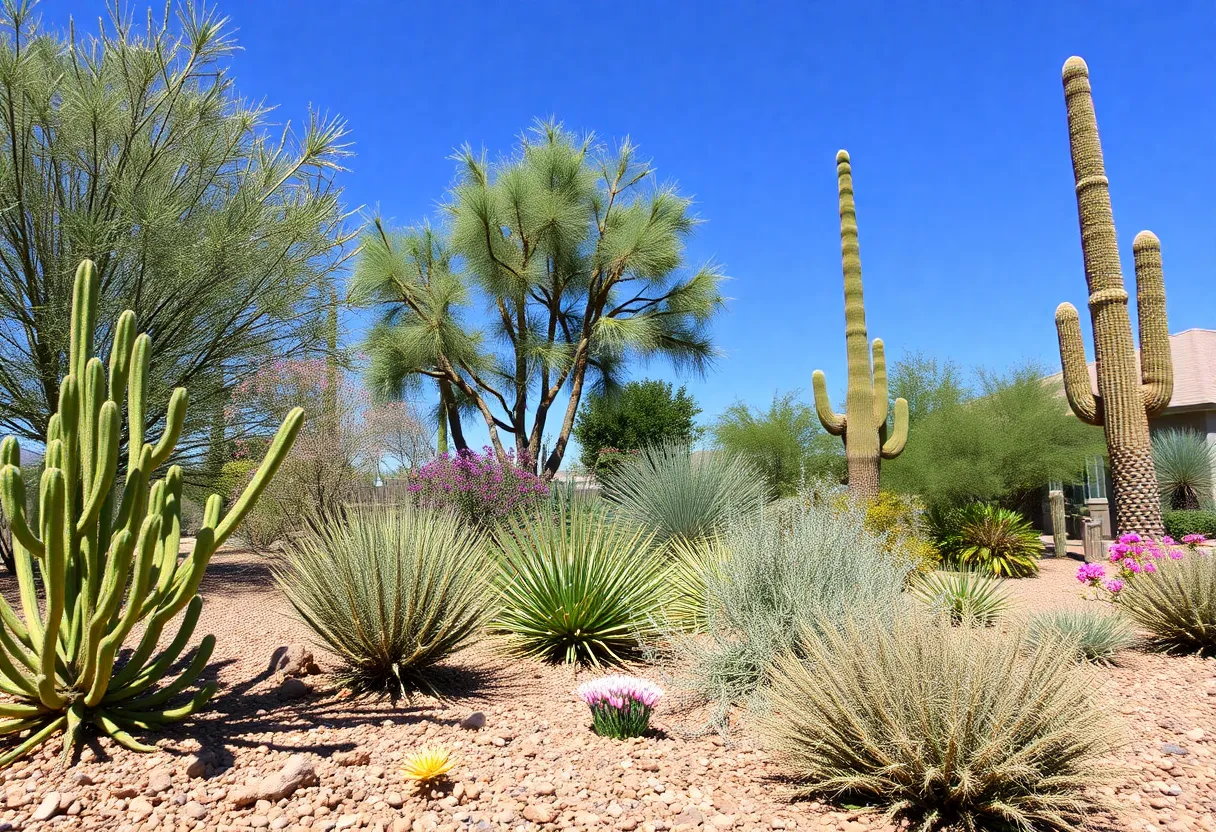Cultivating a Thriving Desert Garden in Phoenix’s Arid Climate
Introduction
Creating a sustainable and vibrant garden in Phoenix’s arid environment demands more than traditional gardening techniques. The region’s extreme heat, low rainfall, and soil conditions necessitate strategic planning and targeted practices. By focusing on key aspects such as soil preparation, efficient watering practices, appropriate plant selection, and ongoing maintenance, gardeners can elevate their landscape from simply surviving to flourishing.
Soil Preparation: Laying a Fertile Foundation
Understanding Native Soil Characteristics
Phoenix’s native soils are predominantly sandy or clay-like and tend to be alkaline. These conditions can hinder the availability of essential nutrients and compromise water retention. Proper soil preparation is critical for plant vigor and long-term garden success.
Amendment Strategies
Incorporate organic matter such as compost or well-rotted manure into native soil. This improves water retention, enhances drainage, and supplies vital nutrients. Replacing up to 50% of the native soil with compost during bed creation can dramatically benefit plant health. For established beds, top-dressing with a 2-inch layer of compost and mixing it into the top 6-12 inches of soil revitalizes existing plants.
Soil Testing and pH Management
Regular soil testing is essential to assess pH and nutrients. Since Phoenix’s soils are predominantly alkaline, adjusting pH with materials like elemental sulfur may be necessary for certain plants. Tailoring amendments based on test results ensures optimal conditions for plant growth.
Watering Practices: Optimizing Water Use
Deep, Infrequent Watering
In arid climates, deep watering encourages plants to develop deep root systems. This practice increases drought resilience and reduces frequent watering needs.
Timing and Technique
Water early in the morning or late in the evening to minimize evaporation. Implementing a drip irrigation system delivers water directly to plant roots, reducing waste and ensuring consistent moisture levels.
Mulching for Moisture Retention
Organic mulches such as wood chips or straw are vital. Applying a 2-3 inch layer around plants helps retain soil moisture, suppress weeds, and regulate soil temperature. Regular replenishment maintains effectiveness.
Plant Selection: Matching Plants to the Environment
Native and Drought-Tolerant Species
Select plants that thrive in Phoenix’s arid climate. Examples include desert marigold, trailing lantana, and silverbush. These species are drought-tolerant, require minimal supplemental water, and attract beneficial insects, promoting ecological balance.
Plant Spacing and Arrangement
Proper spacing enables good air circulation and reduces disease risk. Grouping plants with similar water and light needs further enhances garden efficiency.
Ongoing Maintenance: Ensuring Long-Term Garden Health
Pruning and Deadheading
Routine pruning after flowering encourages vigorous growth and maintains aesthetic appeal. Remove dead or diseased branches to prevent pest and disease issues.
Monitoring and Pest Control
Regular inspections help identify pest problems early. Favor natural pest control methods such as promoting beneficial insects or applying organic remedies. Avoid chemical pesticides that can harm the ecosystem.
Fertilization
Use diluted organic fertilizers during the growing season. Over-fertilization can lead to weak, overly lush growth susceptible to pests and environmental stress. Focus on delivering nutrients only as needed, guided by soil tests.
Additional Considerations for a Resilient Desert Garden
Shade Structures and Trees
Incorporate shade structures or shade trees to protect sensitive plants. This reduces heat stress and controls soil moisture evaporation. Strategic placement mitigates the impact of the intense Phoenix sun.
Wind Protection
Install windbreaks such as fences or tall shrubs. Wind can dry out soil rapidly and cause physical damage. Proper protection maintains a more stable microclimate within the garden.
Regular Soil Testing
Continuously monitor soil health. This allows for precise adjustments in amendments, ensuring sustained plant vigor and soil quality over time.
Pest and Beneficial Insect Management
Create a balanced ecosystem by attracting beneficial insects, such as ladybugs and predatory wasps. Use natural pest control methods to reduce reliance on chemicals, which can disrupt ecological harmony.
Conclusion
By implementing these soil enhancement, water-efficient watering practices, smart plant choices, and diligent maintenance, Phoenix gardeners can cultivate a thriving desert garden. This approach not only promotes sustainability but also enriches the local landscape’s biodiversity and visual appeal. Success hinges on understanding environmental challenges and responding with informed, targeted strategies to foster resilience and beauty over time.
Frequently Asked Questions (FAQ)
What are the best native plants for a desert garden in Phoenix?
Best native plants include desert marigold, trailing lantana, silverbush, and other drought-tolerant species adapted to Phoenix’s climate. These plants require minimal water and thrive in alkaline soils.
How often should I water my desert garden?
Water deeply once every 2-3 weeks, adjusting based on rainfall and plant needs. Early morning or late evening watering minimizes evaporation. Use drip irrigation for efficiency.
What soil amendments improve desert soil?
Organic amendments like compost, well-rotted manure, and soil conditioners tailored to adjust pH help improve water retention, drainage, and nutrient availability in desert soils.
How can I prevent water loss due to evaporation?
Apply 2-3 inches of organic mulch around plants, establish shade structures, and water during cooler parts of the day to reduce evaporation and conserve moisture.
Key Features of a Successful Desert Garden in Phoenix
| Aspect | Key Strategies |
|---|---|
| Soil Preparation | Organic amendments, soil testing, pH adjustment |
| Watering | Deep, infrequent watering; drip irrigation; mulching |
| Plant Selection | Native, drought-tolerant species; proper spacing |
| Maintenance | Pruning, pest management, fertilization |
| Additional Elements | Shade structures, windbreaks, soil monitoring |
Author: STAFF HERE PHOENIX WRITER
The PHOENIX STAFF WRITER represents the experienced team at HEREPhoenix.com, your go-to source for actionable local news and information in Phoenix, Maricopa County, and beyond. Specializing in "news you can use," we cover essential topics like product reviews for personal and business needs, local business directories, politics, real estate trends, neighborhood insights, and state news affecting the area—with deep expertise drawn from years of dedicated reporting and strong community input, including local press releases and business updates. We deliver top reporting on high-value events such as the Waste Management Phoenix Open, Cactus League Spring Training, and Arizona State Fair. Our coverage extends to key organizations like the Greater Phoenix Chamber of Commerce and Visit Phoenix, plus leading businesses in technology and healthcare that power the local economy such as Intel and Banner Health. As part of the broader HERE network, including HERETucson.com, we provide comprehensive, credible insights into Arizona's dynamic landscape.





